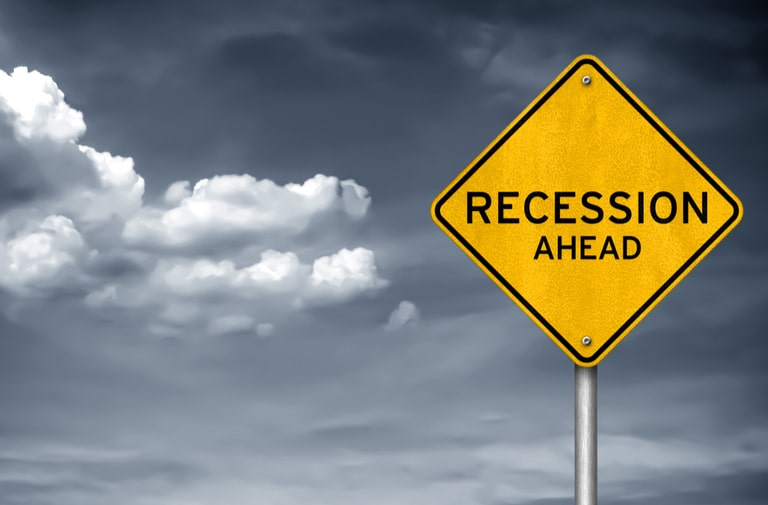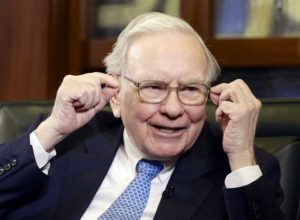By Alexander Kurov, West Virginia University
Editor’s note: As with all articles on iDose, the views presented are those of the author’s, and not necessarily iDose
Global markets are crashing, the price of oil is plummeting and even entire countries are in lockdown. The odds of a recession due to the new coronavirus outbreak are rising every day.
A question I’m often asked as a finance professor and a CFA charterholder is what should people do with their money when the economy is slowing or in a recession, which typically causes riskier assets like stocks to decline. Fear causes many people to run for the hills.
But the short answer, for most investors, is the exact opposite: Stick to your long-term plan and ignore day-to-day market fluctuations, however frightening they may be. Don’t take my word for it. The tried and true approach of passive investing is backed up by a lot of evidence.
Most of us have money at risk
While we usually associate investing with hotshot Wall Street investors and hedge funds, the truth is most of us have a stake in financial markets and their ups and downs. About half of American families own stocks either directly or through institutional investment vehicles like mutual funds.
Most of the invested wealth average Americans hold is managed by professional investors who look after it for us. But the continued growth of defined contribution plans like 401(k)s – which require people to make choices about where to put their money – means their financial security increasingly depends on their own investment decisions.
Unfortunately, most people are not good investors. Individual investors who trade stocks underperform the market – and passive investors – by a wide margin. The more they trade, the worse they do.
One reason is that the pain of losses is about twice as strong as the pleasure of gains, which leads people to act in counterproductive ways. When faced with a threatening situation, our instinctive response is often to run or fight. But, like trying to outrun a bear, exiting the market after suffering losses is not a good idea. It often results in selling at low prices and buying higher later, once the market stress eases.
The good news is you don’t need a Ph.D. in finance to achieve your investment goals. All you need to do is follow some simple guidelines, backed by evidence and hard-earned market wisdom.
Investing checklist
First of all, don’t make any rash moves because of the growing chatter about recession or any wild gyrations on Wall Street.
If you have a solid investment plan in place, stick to it and ignore the noise. For everyone else, it’s worth going through the following checklist to help ensure you’re ready for any storm on the horizon.
Define clear, measurable and achievable investment goals. For example, your goal might be to retire in 20 years at your current standard of living for the rest of your life. Without clear goals, people often approach the path to getting there piecemeal and end up with a motley collection of investments that don’t serve their actual needs. As baseball legend Yogi Berra once said, “If you don’t know where you are going, you’ll end up someplace else.”
Assess how much risk you can take on. This will depend on your investment horizon, job security and attitude toward risk. A good rule of thumb is if you’re nearing retirement, you should have a smaller share of risky assets in your portfolio. If you just entered the job market as a 20-something, you can take on more risk because you have time to recover from market downturns.
Diversify your portfolio. In general, riskier assets like stocks compensate for that risk by offering higher expected returns. At the same time, safer assets such as bonds tend to go up when things are bad, but offer much lower gains. If you invest a big part of your savings in a single stock, however, you are not being compensated for the risk that the company will go bust. To eliminate these uncompensated risks, diversify your portfolio to include a wide range of asset classes, such as foreign stocks and bonds, and you’ll be in a better position to endure a downturn.
Don’t try to pick individual stocks, identify the best-performing actively managed funds or time the market. Instead, stick to a diversified portfolio of passively managed stock and bond funds. Funds that have done well in the recent past may not continue to do so in the future.
Look for low fees. Future returns are uncertain, but investment costs will certainly take a bite out of your portfolio. To keep costs down, invest in index funds whenever possible. These funds track broad market indices like the Standard & Poor’s 500 and tend to have very low fees yet produce higher returns than the majority of actively managed funds.
Continue to make regular contributions to your investments, even during a recession. Try to set aside as much as you can afford. Many employers even match all or some of your personal retirement contributions. Unfortunately, most Americans are not saving enough for retirement. One in four Americans enrolled in employer-sponsored defined contribution plans does not save enough to get the employer’s full match. That’s like letting your employer keep part of your salary.
There’s one exception to my advice about standing pat. Let’s suppose your long-term plan calls for a portfolio with 50% in U.S. stocks, 25% in international stocks and 25% in bonds. After U.S. stocks have a good run, their weight in the portfolio may increase a lot. This changes the risk of your portfolio. So about once a year, rebalance your portfolio to match your long-term allocation targets. Doing so can make a big difference in performance.
Always keep in mind your overall investment plan and focus on the long-term goals of your portfolio. Many market declines that were scary in real time look like small blips on a long-term chart.
Turbulence ahead
In the long run, this approach is likely to produce better results than trying to beat the market – which even pros tend to have a hard time doing.
Billionaire investor Warren Buffett demonstrated this by easily winning a bet that a simple S&P 500 index fund could beat a portfolio of hedge funds – supposedly the savviest investors out there, at least judging by the high fees they charge.
In the words of legendary investor Benjamin Graham: “The investor’s chief problem and even his worst enemy is likely to be himself.” Graham, who mentored Buffett, meant that instead of making rational decisions, many investors let their emotions run wild. They buy and sell when their gut – rather than their head – tells them to.
Trying to outsmart the market is akin to gambling and it doesn’t work any better than playing a lottery. Passive investing is admittedly boring but is a much better bet long-term.
But if you follow these guidelines and fasten your seat belt, you’ll be able to ride out the current turbulence.
Alexander Kurov is Professor of Finance and Fred T. Tattersall Research Chair in Finance at West Virginia University
Note: The views expressed in this article are the author/s, and not the position of Intellectual Dose, or iDose (its online publication). This article is republished from The Conversation under a Creative Commons license.



